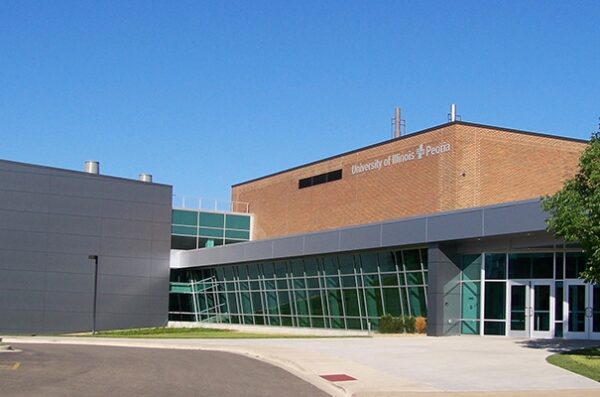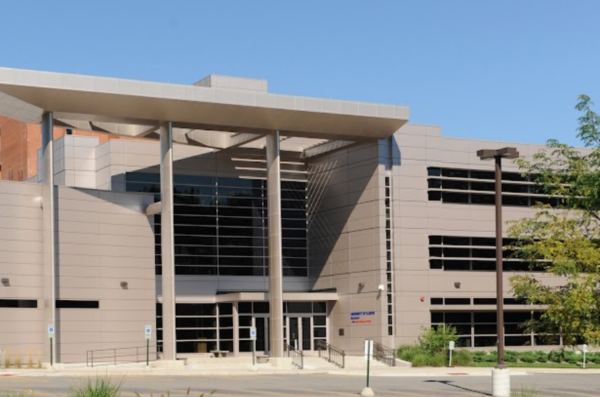University of Illinois College of Medicine
Founded in 1882, we are one of the largest and most prestigious medical schools in the United States. Our faculty members are recognized experts in their fields, and our students are among the best and brightest in the country. Our mission is to advance health for everyone through outstanding education, research, clinical care, and social responsibility.
The College of Medicine has three campuses located throughout the state. Each campus has its own character and provides students and faculty with unique opportunities for research and study.
One College, Three Campuses Heading link
Text Heading link
The College of Medicine maintains an internationally renowned faculty of approximately 4,000 across the three sites. Various types of professional service are rendered by its physicians, such as primary care, specialty practice, research, teaching, preventative medicine and administration. Medical students have the opportunity to become familiar with several professional roles and to choose the role best-suited for their individual goals and abilities.
The surrounding health science center, of which the University of Illinois College of Medicine is a part, also comprises the colleges of Nursing, Pharmacy, Dentistry, and Applied Health Sciences, and the School of Public Health.
Pride points Heading link
-
Mission To advance health for everyone through outstanding education, research, clinical care and social responsibility.
-
Vision Better health and wellness through transformative innovation.
-
Values Excellence
Integrity
Collaboration
Accountability
Diversity, Equity and Inclusion
Campus Heading link
At the University of Illinois College of Medicine, we offer a range of medical education programs to meet the diverse needs of our students. Our MD program is designed to provide students with a strong foundation in the basic and clinical sciences, while our dual MD/PhD program allows students to combine their medical training with advanced research experience. We also offer several graduate programs in basic science and clinical research, as well as a variety of continuing education programs for practicing physicians.
In addition to our outstanding medical education programs, we are also home to several research centers and institutes. Our researchers are at the forefront of medical discovery, working to develop new treatments for a wide range of diseases. Our centers and institutes include the Center for Clinical and Translational Science, the Cancer Center at Illinois, and the Institute for Molecular Engineering.
At the University of Illinois College of Medicine, we are committed to diversity and inclusion. We believe that a diverse student body and faculty are essential to creating a rich and vibrant learning environment. We are proud of our efforts to recruit and support students from underrepresented backgrounds, and we have a number of programs and initiatives in place to promote diversity and inclusion.
We are dedicated to providing our students with the best possible medical education, and we look forward to working with you to achieve your goals in medicine.
History Heading link
-
Past
In the late 1800s, disease in Chicago was rampant, as was common in the area at that time. One in six children died of diphtheria, cholera or dysentery, and the role of bacteria in disease transmission was still a new discovery. Although six medical schools were already in existence, five physician-educators: Charles Warrington Earle, Abraham Reeves Jackson, Daniel Atkinson King Steele, Samuel McWilliams and Leonard St. John—decided to open their own proprietary medical school. The gentlemen pooled together $5,541.78, purchased a piece of land and secured a certificate of incorporation. The new school, located on Harrison and Honore streets, was named the College of Physicians and Surgeons of Chicago (commonly referred to as P&S). Its doors opened on Sept. 26, 1882, with a class of 100 students and a faculty of 27 physicians.
At the West Side Free Dispensary, located on the first floor of the medical school, students in small groups could observe pathological cases and their treatment. Patients were classified according to the affected area or system of the body: heart, lungs, eyes, ears, skin or nervous system. The dispensary also furnished material for college clinics in medicine, surgery, gynecology, obstetrics, ophthalmology, neurology and pediatrics. In its first three years, the dispensary registered 20,353 patients and dispensed 17,347 prescriptions.
Other charitable organizations created in Chicago around the same time included the new Hull-House, a social services institution opened by Jane Addams in 1889. The original house remains as part of the University of Illinois at Chicago campus, along with the restored settlement dining hall.
In 1913, after years of negotiations, the P&S faculty and alumni donated stock to the University of Illinois Board of Trustees to establish the University of Illinois College of Medicine. In 1970, the Illinois legislature voted to expand the college to three additional sites: Peoria, Rockford and Urbana. Their purpose was to provide access to care for all citizens in the state and increase opportunities for Illinois residents to attend medical school.


